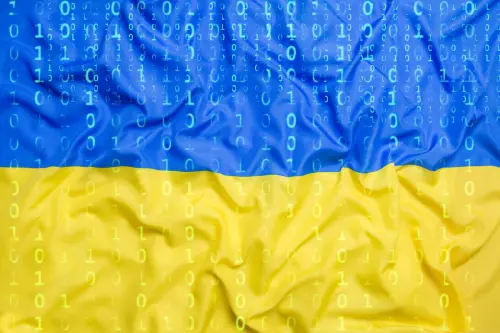Context
As of the end of 2023, some 14 million Ukrainians had fled their homes since the Russian invasion of Ukraine in February 2022—5.1 million internally and 6.2 million throughout Europe.1 This represents the largest human displacement crisis in the world today. While there is no silver lining to a crisis of this scale and depth, this paper attempts to understand one factor that is contributing to Ukraine’s resilience in a time of war and supporting enormous numbers of displaced individuals in their efforts to resume normal life: citizens’ ability to easily access their identity certificates, education credentials, health care records, and financial support through the government’s online citizen portal.
To understand the role of digital capabilities in the ability of the Ukrainian government to meet the needs of its citizens in a time of war, the research for this paper involved accessing written documents and websites; interviews with Ukrainian ministry officials, representatives of donor organizations that have provided digital technical assistance to Ukraine, and staff of organizations implementing assistance; and email exchanges with some of those officials. We draw considerably on information—public documents and presentations, statistics, and comments on an early draft, provided by a key official within Ukraine’s Ministry of Digital Transformation.2 We were unable to find data on citizen experiences using digital services beyond usage statistics. We would have hoped to gather more on the degree to which digital services are valued, accessible, trusted, and responsive to concerns, and the extent to which these experiences differ by gender, age, and geography. Citizen trust and experience is a critical success factor that we have yet to fully understand in the Ukrainian context.
The research reveals:
- Ukraine’s journey of digitization was a decade in the making and involved support from the global community to overhaul policy, institutional, and technology constructs. By embracing change in all three areas and revising the analog systems on which they are based to make them compatible with digital solutions, today’s digital experience in Ukraine allows for near-seamless e-government services for citizens, businesses, and an array of government ministries.
- Ukraine’s path to digitalization owes much to Estonia, which has been at the forefront of digital government and served as a model and early adviser to Ukrainian efforts. Even today there are more than 30 Estonian advisers embedded within the Ministry of Digital Transformation.3
- Initial efforts to digitize government started in 2012; the first significant innovation was in 2015 with the e-procurement platform Prozorro, which increased transparency (thereby reducing corruption), intensified competition for government bids, and reduced costs.
- President Zelensky’s ambitious reform agenda was built on an earlier e-government foundation to introduce the digital transformation of Ukrainian society.
- The existing digital capacity and services within the Ukrainian government allowed the adaption and creation of new capabilities and services, which have made a major contribution to the country’s resilience amid the war initiated by Russia. Further advancing its digital capability and reaching the millions of Ukrainians who are still offline can be key elements in rebuilding Ukraine.
- The war catalyzed extensive advancements, including cloud-based data storage, low-code development tools, improved cryptography standards, and European acceptance of Ukrainian digital credentials.
- Launched in 2020, Ukraine’s e-government services through the Diia application—built on the Trembita interoperable data exchange system—are characterized by low construction and maintenance costs, high resistance to corruption, and improved, faster services for citizens with mobile phone and computer access. These services align with international and open contracting data standards as well as statistical and risk-management tools and innovation.4 Ukraine is now sharing aspects of the Diia application with other governments, including Estonia.
-
Footnotes
- UNICEF, “Ukraine Emergency,” UNICEF, accessed December, 2023. https://www.unrefugees.org/emergencies/ukraine/.
- In particular, we conducted an extensive interview and received a range of electronic documentation from Deputy Minister Valerie Ionan.
- Astook, Hannes; interview October 2023.
- World Bank, “YOUKraine: Because Prozorro,” slide 14.





